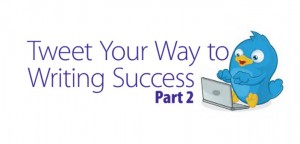Year after year, marketing statistics confirm that email is the most effective channel for acquiring and retaining customers…
In fact, it has a higher conversion rate than search and social media combined!
So, it’s no surprise that 32 billion emails are sent daily by businesses…
Which translates into a huge demand for writers who understand the purpose of emails and know how to write them well.
But here’s the coolest part…
A company doesn’t risk much by giving a new writer a chance to write an email. The turnaround is fast, the commitment is small, and the results are known within a matter of days, sometimes within a matter of hours.
And since companies usually need more than one email, you can quickly be booked up as an email writer with just a few clients, which means your writing income grows just as fast.
So, if you’re looking for a writing path with huge demand, staying power, easy entry, and plenty of income potential — email is a standout choice.
Let’s delve into what makes email writing such an excellent opportunity, and some key steps you can take to learn how to make money writing emails.
Why Email Is So Powerful in Business
Not long ago, Forbes published an article that called email the “engine of digital marketing.” It’s fitting, given that email connects prospects and customers to companies they’re interested in, then pulls them through the different stages of forming a relationship:
- getting acquainted
- building trust
- committing to a purchase or other action
And as I mentioned earlier, it does the job better than any other marketing channel today.
If you just think about email for a minute, you can quickly see why…
For starters, email has more staying power than the fleeting messages of social media. People hold on to and go back to emails days, months, even years later.
Email is more direct and personal than content on a website. It’s written from one person to another person, creating more intimacy and engagement with the reader.
According to a recent report from HubSpot, email generates $42 in revenue for every $1 a business spends on it. This gives email the highest return on investment (ROI) of all marketing channels, which explains why businesses spend so much of their marketing dollars on email each year.
And possibly most important of all, email is permission-based marketing. That means that people who are receiving the emails have given their permission for your client to send them messages.
A prospect has raised their hand and said, “Yes! I’m interested. Please tell me more.”
Of course, that also comes with great responsibility… because a certain level of trust exists within email communication.
When a prospect or customer “opts in” to a company’s email messaging, they expect to receive consistent, honest, informative messages. So when a person gets an email from a company or individual they’ve opted to get mail from, they’re more likely to read and trust the message.
This is a big reason why email marketing has such a consistent ROI. When you send a message with a call to action to someone who already knows, likes, and trusts you, your chances of getting him or her to take an action greatly increase.
But this is also why email marketing needs to be handled professionally — marketers don’t want to botch up the relationships they have with customers.
And that’s ultimately why any writer trained in the art of writing emails is going to have a wide pool of eager clients to choose from.
Because if you ask what kind of client could benefit from building and nurturing an email list with consistent, high-quality messaging, the answer is… all of them.
5 Reasons Emails Are a Powerful Business Tool
Well-written emails can…
1. Improve customer relationships
Email is a simple, inexpensive way to send messages that build trust and share information about a company and its products or services.
2. Send timely messages
Because you’re not relying on snail-mail delivery for your message to get to your subscriber, you can choose the precise time and day your message is delivered — making it simple to coordinate sales and promotions with holidays or specific times of the year.
3. Prompt people to take different actions
You can drive people to your website, encourage them to pick up the phone and call you, ask them to watch a video, or prompt them to sign up for something.
4. Reach customers in real time
About 60 percent of all emails are opened on a mobile device, according to Constant Contact.
5. Make great money
Emails are incredibly affordable — you can reach thousands of people without having to invest a ton, making it easier to score a payoff even with a relatively low number of buyers.
Once you’ve learned how to write a powerful email, you can apply that knowledge in several different ways to start making money writing emails.
4 Ways to Make Money Writing Emails
One of the best things about emails is that they’re short (one or two pages) and often fun to write, and can be packaged in a variety of formats.
Writing emails is so easy to do that when you sit down to write them, you find that a few hours later, you’re done for the day.
To give you a little more insight, let me break down the top four opportunities to make money writing emails. Each is a terrific fit for Barefoot Writers who understand the art of persuasive writing.
Opportunity 1: Autoresponder Series
As you’ve probably gathered by now, email copy plays a vital role in the online marketing strategy of most companies.
Whether it’s a product launch or a new type of service, just about every company out there needs some type of email series to walk a prospective customer through the buying process.
Once someone shares their own email address or takes an action that implies interest, businesses will often send something called an autoresponder series.
That simply means the prospect receives a series of emails related to the action they just took, trying to get them to take the “next action,” which is usually buying a product relevant to the problem they’re trying to solve.
The emails themselves don’t do the selling, though…
They simply entice the prospect to click on a link that takes them to the website of the business, or to a landing page within the website.
Fees: Typically around $250 to $500 per email, with most series including five to seven emails. (That’s right… $3,500 for a single project!)
Learn more about writing autoresponders here.
Opportunity 2: Email Newsletters
E-newsletters don’t do much hard selling. Instead, they take a non-salesy approach to building relationships with prospects by delivering relevant information on a regular basis.
For example, a veterinary office may email its clients monthly on a topic related to taking care of their pets. Maybe one month it’s dental issues, the next it’s heartworm preventive, and so on.
The goal isn’t to sell anything, but rather to stay front of mind with their clients, so that when the need comes up for veterinary services, they’ll be the one that clients call.
And although all businesses — in countless industries — could use these projects, there is a “sweet spot” of clients who will benefit the most: professional service providers.
What is a professional service provider?
Basically, anyone who provides a service or their expertise — like accountants, lawyers, real estate brokers, architects, chiropractors, and coaches. There are simply too many to name here…
In fact, there are 26 million professional service providers in the United States alone — and they account for $2.3 trillion of the US economy. That’s a lot of potential clients for you to choose from.
And, with professional service providers in every industry from consulting to home organization, there’s bound to be a niche that fits your interests.
Email newsletters are also known for providing writers with a consistent, predictable income — otherwise known as a retainer deal, where the company pays you the same amount every month to write a newsletter.
And since you’re writing to the same audience, month after month, on the same topic, the projects are fairly simple. They’re basically short, concise “articles in email form” sent from your client to their target audience, with the goal of keeping new prospects and existing customers engaged.
Fees: You can charge between $500 and $1,500+ for each e-newsletter you write.
Learn more about writing e-newsletters here.
Opportunity 3: Lead-Generation Emails
Lead generation is a specialized skill in the world of B2B writing. It’s the art of matching prospects with complicated, often expensive products and services that help solve their problems.
But such products and services aren’t easily understood at first glance. That’s why companies prepare several types of marketing materials to walk prospects through the process of understanding and (ideally) buying. Emails are a chief form of this type of education.
When you write lead-gen emails, you’re writing copy for prospects who’ve raised their hands for more information. The best types of lead-gen emails are persuasive. They combine strong sales writing skills with informational, fact-filled content.
The copy style is low or no hype, yet still speaks directly to a company’s ideal customer. It gets him or her to take an action that says, “Yes, I want to learn more.”
With lead-gen copy, success is measured by the number of leads generated, not the number of sales. So as long as your copy is bringing leads in the door, you’ll do well.
And since emails make terrific lead-generation pieces, you can build a solid business and start making good money writing exclusively lead-gen emails.
Fees: A follow-up series of four emails can run from $1,500 to $2,500. A follow-up series might be sent after someone expresses interest in a certain product or service and wants to know more. Or, you could write a single, promotional email that lands in the range of $750–$1,500.
Learn more about lead generation here.
Opportunity 4: Email List Building
“The list” is the term given to all the names and contact details of a business’s subscribers and customers. These are the people who get their newsletters, special offers, and sales messages.
Although building the list isn’t strictly about writing, it’s a wildly profitable skill for writers to have, because you’re helping to build the asset companies need most.
Not to mention it can help you grow your own writing business, too!
List building works like this: Most people who visit a website, use a search engine to search the web, or scan social media are browsing.
They want more information, but they’re not ready to buy — not just yet. So they get some information and walk away, likely never to return again.
This is a huge lost opportunity for businesses…
But by capturing that information-seeking visitor’s email address, your client can now follow up and send them emails. Almost all follow-up emails are automated, making it easy to build a long-term valuable relationship.
If you specialize in building email lists, you can help clients capture the contact information of their own site visitors.
Beyond that, you can help your client build a master file of prospects by strategically sharing your client’s message in multiple online venues, driving traffic to their website, and causing their list (or even your own!) to grow by leaps and bounds.
Fees: This is something that can be done as a paid strategy session or billed at an hourly rate. You can also get affiliate commissions if you encourage clients to use online services that you recommend. For more fee-setting tips, check out our article on how much a beginner freelance writer should charge here.
You can also learn more about list building here.
How to Start Making Money Writing Emails
Can you guess the number one best way to find clients who will hire you to write emails?
Email!
Let’s walk through some basic steps for finding your first email writing clients so you can start making money writing emails.
Step 1: Research Potential Clients
The best place to start is to figure out exactly what types of businesses you want to write emails for.
Is there a certain field or market you’re interested in, such as writing for the natural health, food manufacturing, or hockey industries?
This can also be called a niche, and choosing the niche you want to focus on as an email writer will help make your client search much easier.
Instead of looking for any client in general, you can target the companies that are a good fit with your background and skill set. This will make you stand apart from other writers, allow you to write more conversationally, and greatly increase the effectiveness of your emails (and your own personal financial success).
For more details on choosing a niche, AWAI has an excellent free webinar called Find Your Perfect Niche you can watch here.
And once you’ve decided which area or niche you might like to work in, start researching different companies and service providers in that industry.
Take a look at various companies’ websites and familiarize yourself with what they’re already doing in relation to email. Sign up for their email lists if possible, and closely read the emails they send you to get a feel for the content and language they use.
Once you’ve found a few businesses you’d like to approach, find the name of the hiring manager for each company, or simply their customer service contact information.
Gather all the company and contact names into a spreadsheet or other list and move on to the next step…
Step 2: Email Your Top Contenders
Start crafting individual emails to send to each company on your list.
Avoid sending the same, generic email to everyone. You’ll want to personalize each email to showcase your unique skills as they relate to the business you’re writing to.
Explain what sets you apart from other writers, and suggest new ways the company could use email to their advantage. For example, if you see their email subject lines aren’t very engaging, you can make some suggestions for improvement that could increase their email open rate.
Ed Gandia, successful B2B copywriter and coach, also shares an email prospecting template you can use here.
And consider this… In , only 40 percent of marketers thought their email program could be described as best-in-class.
That’s great news for you — because it means the majority of marketers out there are leaving money on the table, and they know it. You won’t have to try very hard to persuade many of these marketers to give you a try.
Step 3: Close the Deal
Keep your list of companies and contact names handy to use for tracking your results.
Write down the date when you sent your first email to each business. If you don’t hear back from them after a couple of weeks, send a quick follow-up email.
But there’s a good chance you will hear back from at least one of the companies you emailed, and that’s when things get exciting!
Some businesses will schedule a call with you to talk in person about a potential project. Many others will communicate through email only.
An easy way to start your initial conversation with any business is to ask them what they want and need in their email campaigns. What issues are they facing? What are their email marketing goals?
This will give you a good idea of how you can help them.
An even better way?
Go in armed with a few new ideas for what could be done to improve their email marketing efforts…
“I love how your emails do A, B, and C. I wish they also did X, Y, and Z! I can help you accomplish those things and would love to prove it to you.”
And when it comes to negotiating your fees, refer to the fee ranges I shared earlier in this article and price your services accordingly.
If you’re brand new to email writing, you may choose to quote a rate you feel most comfortable with…
But remember, emails have a high return on investment for companies. And they drive revenue directly to the bottom line. That’s why companies are willing to pay writers high fees to write them!
Final Thoughts
There’s never been a better time to learn the writing skills needed to excel at email marketing and how to make money writing emails.
The digital marketing world has numerous channels, and the standout winner of them all is the recognizable, reliable, engine of the internet: email.
So take the steps I’ve outlined in this article and start building your career as a professional email writer today. Your future clients are waiting for you!
Editor’s Note: If you’d like to learn more about how to make money writing emails, check out AWAI’s comprehensive program How to Write High Impact Emails: The Master Formula for Creating Emails that Delight, Engage, and Get the Click.







